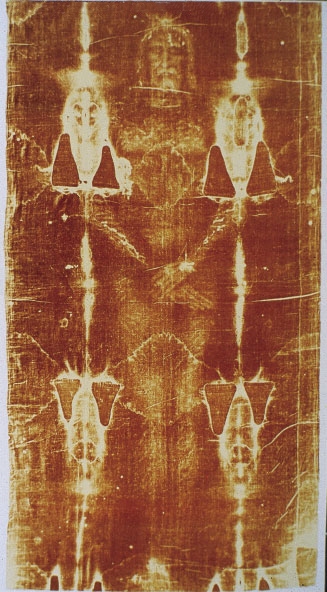
Home


 Shroud of Turin Expositions 1998: Scott 1073-1074 2015: Scott 1583 

 Saint Teresa of Avila 400th Anniversary of Death Scott 710-712 (1982) The Catholic Church and the Vatican take very strong positions when it comes to science and nature, which are viewed as extensions of God and Creation. Institutions such as the Vatican Observatory and the Pontifical Academy of Sciences (PAS) attest to this convergence of faith and science. One of the goals of the PAS, "promoting the progress of the mathematical, physical and natural sciences, and the study of related epistemological questions and issues", provides a general overview of its mission. Last year around this time, there were two stories that appeared in the Catholic press where scientific examinations were performed on items that go to the heart of our faith. 
From Wikimedia Commons (in the public domain) The first is a report on a scientific study taken of the Shroud of Turin, the fabric believed to be the burial cloth of Jesus Christ. The study, which was conducted in 2022, involved the use of X-ray technology to examine the fibers making up the cloth. It was determined that the cloth dates back to the first century AD, squarely in the time period of the crucifixion of Christ. In addition, blood stains were found on the Shroud, as well as chemical elements of human origin, including creatinine (a waste product of metabolism found in the urine).  Tomb of Saint Teresa of Avila Main altarpiece of the Carmelite monastery of Alba de Tormes Photo by José Luis Gutiérrez Robledo From Wikimedia Commons, used under the terms of the Creative Commons Attribution-Share Alike 4.0 International license The second study involved the opening of the sarcophagus of Saint Teresa of Avila, which is located in Spain. Saint Teresa died in 1582. However, more than 400 years after her death, her human body has remained incorrupt (meaning preserved from natural decay). Her remains were previously examined in 1914, and photographs were taken to document the state of her body at that time. Her tomb was reopened in last August, and her remains were found to be in the same state. Her sealed coffin contains her body as well as her heart (some of her body parts are also stored as relics at other sites). The topic of relics is reviewed in the recent CNA article found in the References. Two articles in the References provide additional details on these fascinating developments. The phenomena of the Shroud of Turin and the incorrupt state of the body of saints (Saint Teresa of Avila is not the only example of incorrupt saintly remains) are accepted as signs of our faith, and are confirmed to some degree by modern science. The exact mechanisms for these phenomena remain mysteries, as perhaps they should. REFERENCES: |